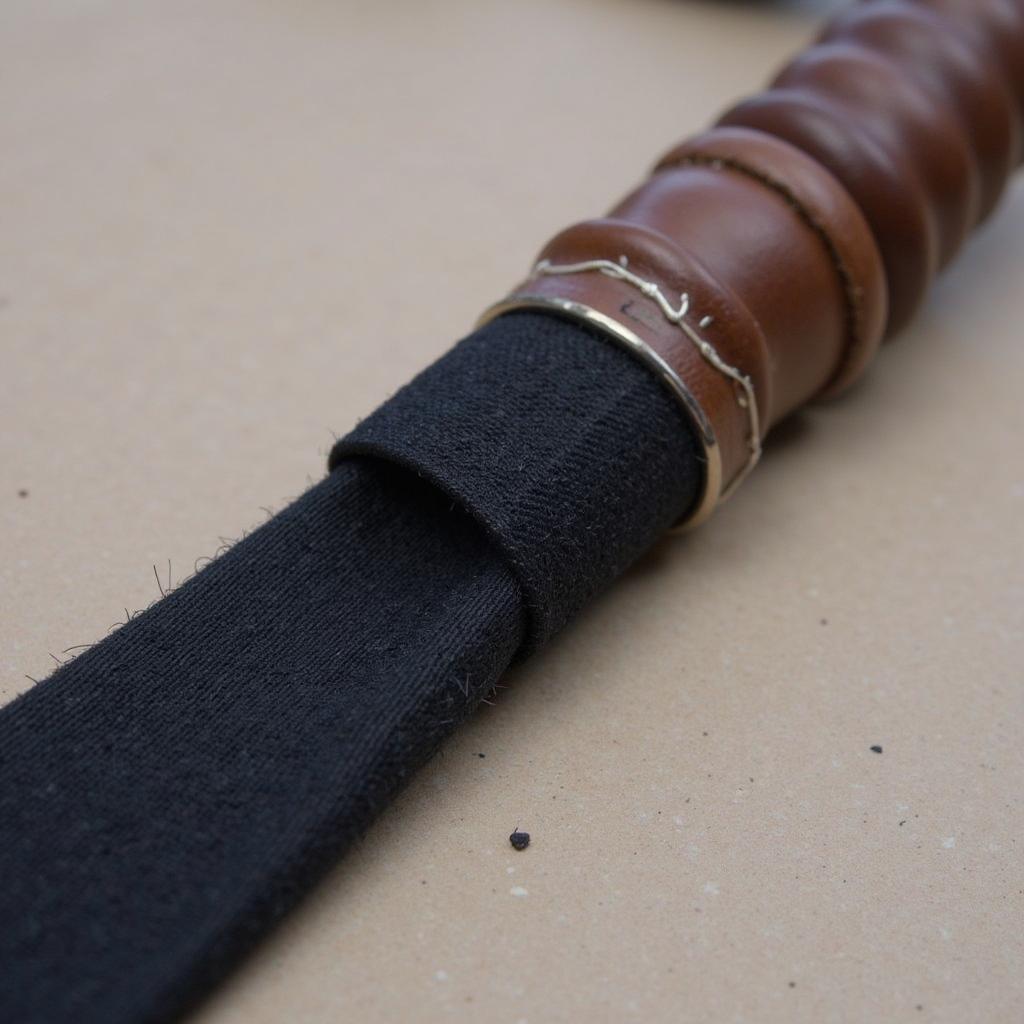The Race Horse Whip, a seemingly small piece of equipment, sparks heated debate and raises important questions about horse welfare and the sport of racing. This article delves into the nuances of the race horse whip, exploring its history, regulations, and the ongoing discussions surrounding its use.
A History of the Race Horse Whip
The whip has been a part of horse racing for centuries, evolving from a basic riding aid to the specialized tool used today. Initially, whips were likely used for encouragement and directional cues, much like in other equestrian disciplines. Over time, the design and permitted usage of the whip in racing have been significantly modified, largely driven by concerns about horse welfare.
After this initial period, the development of specialized racing whips began.  Jockey using a race horse whip during a race
Jockey using a race horse whip during a race
Regulations and Usage of the Race Horse Whip
Modern racing whips are significantly different from their predecessors. They are now padded and designed to minimize impact while still serving as a signal for the horse. Strict regulations govern their use, limiting the number of strikes allowed and specifying permitted areas of contact. These rules are constantly under review and subject to change as new research on horse welfare emerges. For example, many racing jurisdictions now have rules in place limiting the number of times a jockey can use the whip during a race and prohibiting strikes to sensitive areas. This careful regulation demonstrates a growing awareness and commitment to protecting racehorses. If you are interested in learning more about horse training, check out our guide on training a colt horse.
The Debate Surrounding Race Horse Whips
The use of the whip in horse racing remains a contentious issue. Animal welfare advocates argue that its use, even in a regulated form, is unnecessary and potentially distressing for the horses. They advocate for its complete ban, suggesting alternative methods of encouragement.  Close up of a padded race horse whip
Close up of a padded race horse whip
On the other hand, many within the racing industry maintain that the whip, when used responsibly and within the established rules, is a crucial tool for jockey safety and for encouraging horses to perform at their best. They argue that the whip serves as a signaling device, helping jockeys guide their mounts and maintain control, particularly in tight situations. Further, they believe its use can be essential in ensuring a close finish, adding to the excitement and competitiveness of the sport.
Why is the Whip Used in Horse Racing?
Many people wonder why the whip is used at all in horse racing. The answer is complex and multifaceted. Proponents argue it serves as an aid for urging horses forward in the final stages of a race, ensuring maximum effort and a close finish, thus enhancing the excitement for spectators. It’s also seen as a tool for maintaining control and safety, particularly in crowded fields where slight adjustments in positioning can be crucial.
Is the Whip Cruel to Horses?
This is the central question in the debate surrounding the use of the race horse whip. While some argue that the padded whips and strict regulations minimize any potential harm or distress, others maintain that any use of the whip is inherently cruel and unnecessary. Research on this topic is ongoing, and the answer remains complex and contested.
What are the Alternatives to Using the Whip?
Several alternatives to the whip have been proposed, including voice commands, different riding techniques, and even the possibility of racing without any encouragement aids whatsoever. However, the feasibility and effectiveness of these alternatives are still under discussion.
Looking for gifts for the horse lover in your life? Check out our selection of gifts for the horse woman.
The Future of the Race Horse Whip
The future of the race horse whip is uncertain. The ongoing debate and evolving research on horse welfare will likely continue to shape regulations and practices surrounding its use. Finding a balance between horse welfare, jockey safety, and the traditions of the sport remains a complex challenge for the racing industry. Learn more about horse equipment, such as the driving harness horse.
Another piece of horse equipment is the horse whip crop. You can also find information about horse hair on our website about hair horse tail.
Conclusion
The race horse whip remains a topic of intense scrutiny and discussion. Understanding the history, regulations, and arguments surrounding its use is crucial for anyone involved or interested in the sport of horse racing. As we move forward, the conversation about the whip’s place in racing must prioritize horse welfare while acknowledging the complexities and traditions of this long-standing sport.
FAQ
- What is a race horse whip made of? Modern race horse whips are made of padded materials designed to minimize impact.
- Are there rules about using the whip in horse racing? Yes, strict regulations govern whip use in racing, limiting the number of strikes and areas of contact.
- Why is the use of the whip controversial? Animal welfare concerns and the perception of cruelty are the primary reasons for the controversy.
- Are there alternatives to the whip in horse racing? Various alternatives, such as voice commands and different riding techniques, are being explored.
- What is the future of the whip in horse racing? The future of the whip depends on ongoing research and the evolving ethical considerations surrounding horse welfare.
- What are the typical penalties for misuse of a whip in a horse race? Penalties vary by jurisdiction but can include fines, suspensions, and disqualification.
- How does the padding on a race horse whip work? The padding helps to spread the force of the strike over a larger area, reducing the impact on the horse.
Need assistance? Contact us at Phone: 0772127271, Email: [email protected] or visit us at QGM2+WX2, Vị Trung, Vị Thuỷ, Hậu Giang, Việt Nam. We have a 24/7 customer service team.